From the December 2022 issue of Apollo. Preview and subscribe here.
In 1984, a friend took me to the opening of a show of work by a colleague of hers at the Slade called Mario Dubsky. It was just 17 years since the Sexual Offences Act (1967) had legalised homosexual practices between consenting adults in England and Wales. The love that had not dared speak its name now shouted it from the rooftops, even if it sometimes stumbled over the pronunciation.
Mario, in his thirties, had been a fine painter of large colour field canvases with names such as El Paso and Firebrand. Then, after two years spent on a Harkness fellowship in New York, he had begun to draw charcoal nudes of men with detumescing genitals as their focal point; part Keith Vaughan, part Tom of Finland. There were, in my possibly flawed memory, a great many of these in the show – a source of embarrassment to my bashful, early-twenties self. So, too, the hard stare with which Mario fixed me when we were introduced, accompanied by a snapped, ‘You have beautiful eyelashes.’ I blushed and fled.
It was the last time I saw him. A few months later, our mutual Slade friend, her brows knitted, remarked that Mario wasn’t well. He had some childhood illness – chicken pox, maybe? – not usually seen in middle-aged men, and certainly not with such severity. This was followed by vicious diarrhoea that doctors at the Royal Free Hospital seemed powerless to control. Finally, there was the coup de grâce: a brain infection that destroyed and then, on 24 August 1985, killed him. He was 46.
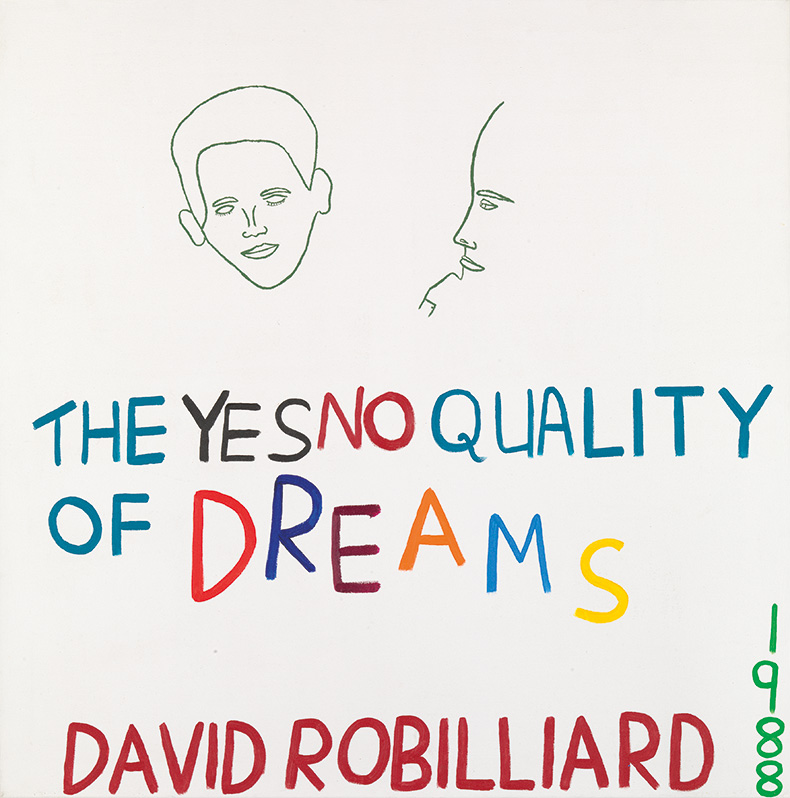
The Yes No Quality of Dreams (1988), David Robilliard. Tate, London. © Estate of David Robilliard/DACS 2022
Over all of this, there had hovered an unspoken word: AIDS. By 1985, it was no longer new. AIDS had taken over from another unlovely, four-letter acronym, GRID – gay-related immune deficiency – when it was found that straight men and women might also be affected by the thing it described. That was in 1982, 40 years ago this year, and two before Mario fell ill. If AIDS was then still a rarity in Britain – by the end of 1985, only 58 men were known to have died of it – that didn’t explain the uncanny silence that surrounded the word. Mario may have been the first person I knew of in the art world to die of the disease, but he was to be by no means the last. Six months later came Robert ‘Groovy Bob’ Fraser, star gallerist and friend of Mick Jagger; in 1988, the poet-painter, David Robilliard. Robilliard’s partner and fellow-painter, Andrew Heard, followed in 1993. Then, in 1994, Derek Jarman.
Jarman was variously the odd man out in all of this. Diagnosed with HIV in 1986, he had straightaway gone public with his illness. He was thus also unusual in surviving long enough to address AIDS in his art, in films such as Blue (1993) that dealt with HIV-induced blindness, and in paintings such as the Tate’s Ataxia – Aids is Fun (1993) whose messy composition ironised one of the illnesses suffered by its maker and other AIDS patients. (Ataxia is a neurological condition the artist dubbed ‘the wobbles’. ‘I want to release some of the anger which everyone with HIV feels,’ he said of the work where the brushstrokes seem slashed on to the canvas, the explosion of paint held together by the bright red background. ‘The actual physicality of painting will release the violence in me.’)
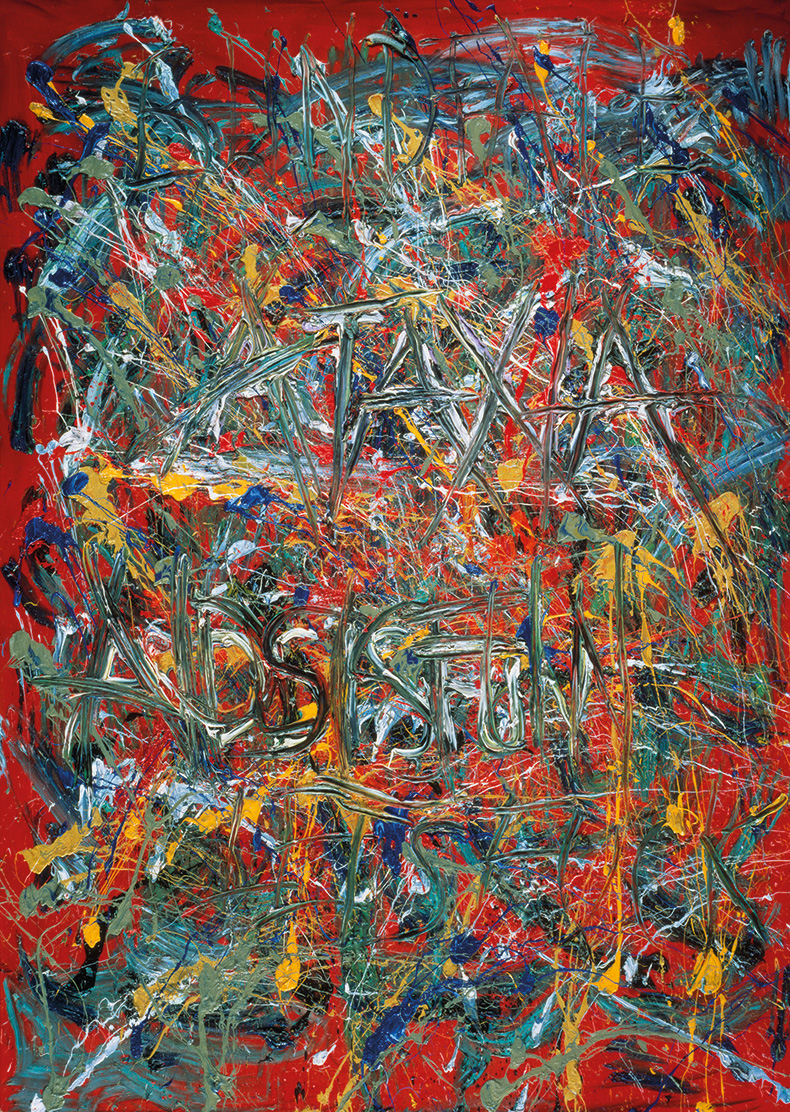
Ataxia – Aids is Fun (1993), Derek Jarman. Tate, London
This was not typical of artists with HIV. If Robilliard had taken to introducing himself as ‘Robilliaids’ soon after his diagnosis, he had died within a few months of it. The work he made in the year of his death featured his first canvases, including the Tate’s The Yes No Quality of Dreams (1988) a gay musing on heteronormative advertising slogans. There is no mention of viruses. As with Mario, there had been no time to turn illness into work.
Even where British artists had had that luxury, they had not always availed themselves of it. While the art of Lagos-born Brixton photographer Rotimi Fani-Kayode addressed the fetishisation of the Black male body in queer culture, it did not directly touch on the artist’s own HIV status. Sonponnoi (1987) shows the body of a black man taken in the black and white of gelatin print, to which the artist has added hand-drawn crayon dots of pink, white and black. The reference to smallpox in this early work might have been meant as a correlative to HIV, but if so the echo was so subtle that it may equally well have not. The hand-drawn dots call to mind the lesions of Kaposi’s sarcoma, but they are also formally decorative. (Fani-Kayode died in 1989, at 34.) Gilbert and George’s ‘For AIDS’ show at the Anthony d’Offay Gallery in 1989 was heroic in donating all the money from sales – over £500,000 – to the charity, CRUSAID. The iconography of its 25 photographic works, though, seemed little different from the one with which the pair had already made their sulphurous name: roughly, doom plus boys. In that sense, Gilbert and George had been ahead of the curve. As the Los Angeles Times approvingly noted, ‘illustrating specific subjects is not their style’, even if that subject was an epidemic.
The result of all this is a strange absence. Walk through any museum of modern British art 40 years on from the naming of AIDS and, visually, the epidemic might never have happened. When, last year, David Zwirner announced a series of curated solo shows in their London and New York galleries to mark the anniversary of the disease’s onset – the focus was on those ‘whose lives were cut short by HIV/AIDS-related complications’ – only one was of the work a British artist: Derek Jarman.
At first, things had been the same in the United States. In an article in a 1987 issue of the US critical magazine October, the author had complained that ‘AIDS is an epidemic with no representation’. The same could certainly not have been said five years later. In 1989, the photographer Nan Goldin had put together an exhibition at the non-profit Artists Space on West Broadway called ‘Witnesses: Against Our Vanishing’. The works on show were hardly euphemistic, or often even mimetic. In many cases, they were also nakedly autobiographical.
Among them were paintings of electrocardiograms by James Nares, photographs of limbs and skin by Peter Hujar and David Wojnarowicz, and Ramsey McPhillips’ bloodied bedsheets. By the time the show opened, Hujar was dead of AIDS. Wojnarowicz and three of its other artists – Vittorio Scarpati, Mark Morrisroe and Darrel Ellis – would all be dead within two years of the show’s end, as would Cookie Mueller, a contributor to the show’s catalogue.
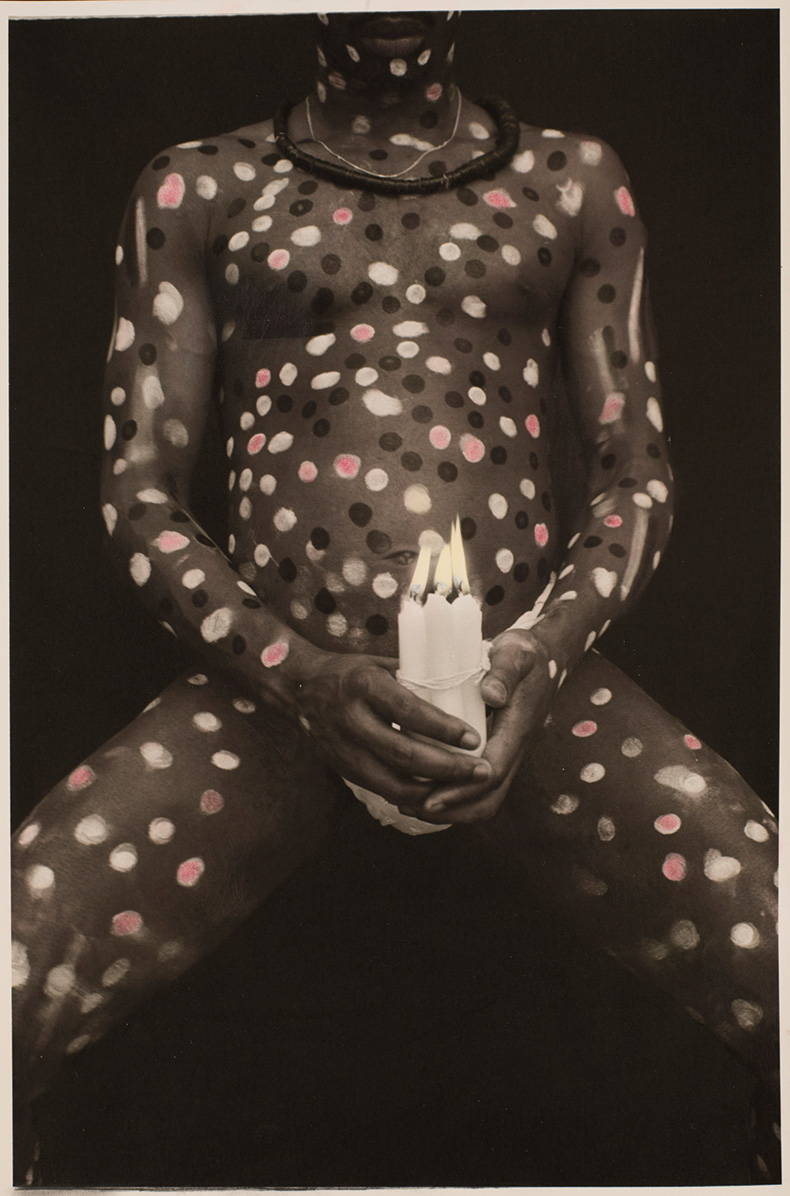
Sonponnoi (1987), Rotimi Fani-Kayode. Tate, London
For all that, ‘Witnesses’ went out of its way to defy the stereotyped categories – gay versus straight, well versus ill, guilty versus innocent – that had taken hold in the popular American imagination in the seven years of AIDS’ known existence. The images in the show, and Goldin’s hang of them, made no distinction between subjects who were HIV positive and those who weren’t, between gays and non-gays, Haitians and heroin addicts. This was not an attempt at camouflage. Rather the opposite: Goldin’s intention had been to show that ‘we’ – Americans, non-Americans, humanity – were all in it together. As the Cuban-born artist, Félix González-Torres, put it, ‘In the time of AIDS, we all live and die “in AIDS” […] whether or not we die “of AIDS”.’ González-Torres died of AIDS in 1996, at 38.
As a result of this, there is a cadre of canonical modern US artists who are AIDS-identified even if their work was not always AIDS-specific: González-Torres is one, as are Keith Haring and Robert Mapplethorpe. All are names known to the average US gallery-goer. Beyond these again is a far larger second rank of lesser-known names that includes Hujar, Morrisroe, Wojnarowicz, Hugh Auchincloss Steers and many others. In Britain, the picture is rather different.
In April 1987, my friend Ivan, a graphic artist, sat on his bed in the Middlesex Hospital in London. Opposite him sat the then Princess of Wales, who had come to open the Broderip Ward, the first in the UK dedicated to the care of AIDS patients. In a photograph that went around the world, Diana reached over and shook Ivan’s hand. At the time, there was a general fear that HIV might be contagious; it was a morally brave thing for the princess to have done. Once she had gone, Ivan, typically, asked if he could sanitise the hand Diana had shaken. ‘I don’t know where she’s been,’ he said. It was his own, small piece of protest art; a refusal to be subsumed, as a person, into a disease. He died two months later, at 32.
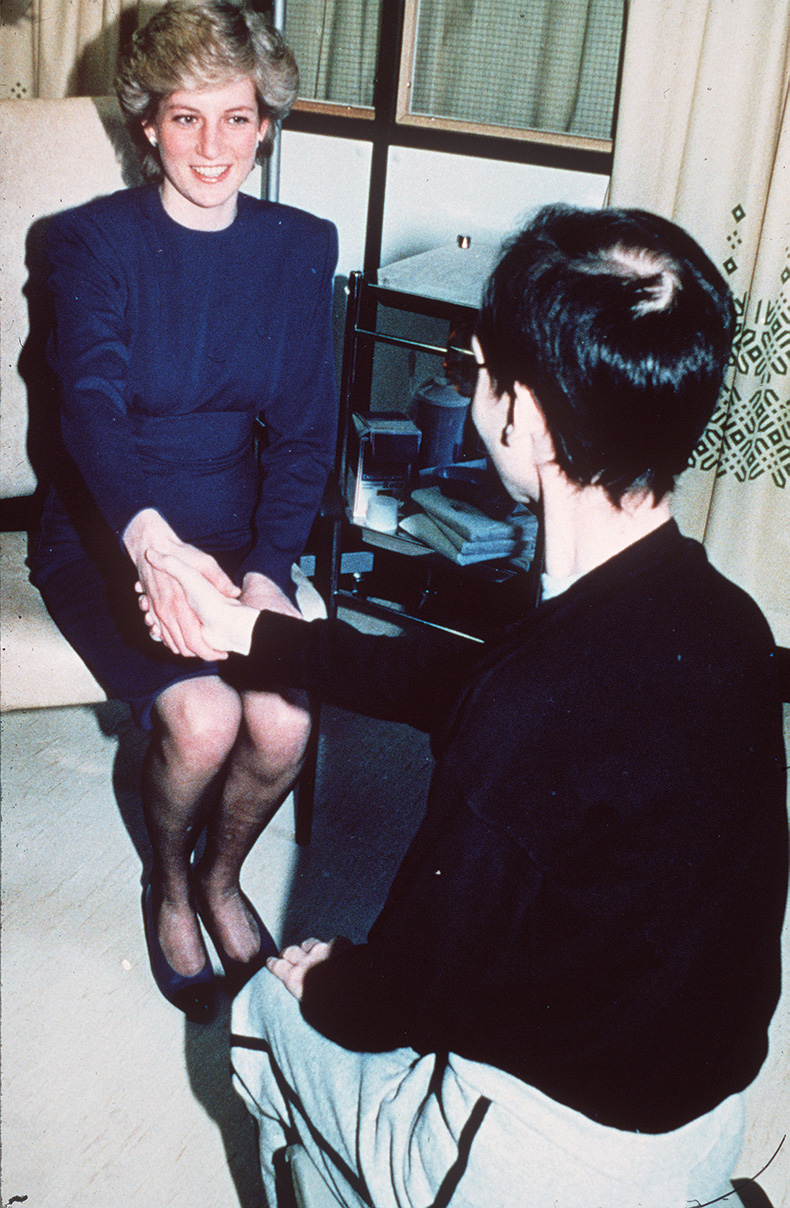
Diana, Princess of Wales, with patient Ivan at the opening of the Broderip Ward at Middlesex Hospital, London, in April 1987. Courtesy Anwar Hussein / Contributor
That same year, in New York, the Silence = Death project produced what remains the best-known image of what might broadly be called AIDS art: a black poster with a pink triangle on it, the project’s name spelled out along the bottom in stark sans-serif block capitals. The US art world took the slogan to heart. In Britain, to a far greater extent, silence still reigned. My Slade friend never used the word AIDS when talking about Mario and his illnesses; nor did I. When Ivan began visibly to dwindle, when he was hospitalised with the familiar litany of HIV-related illnesses – cryptosporidiosis, fistulas, et cetera – neither of us mentioned what was happening to him, although we both knew. Why?
The answer is complex. Ivan’s photograph with the Princess of Wales had been taken from behind to preserve his anonymity. The day after it was published, one of the more loathsome Tory red-tops identified him by name, outing him as ‘a known homosexual’. If his observant Jewish family had both known and not known this, they had certainly not wanted it discussed in the press. The newspaper had found Ivan’s name by disguising a reporter as a doctor and sending him onto the ward to steal the notes from the end of his bed. Then, too, Ivan felt no solidarity with the coughing, hollow-eyed young men around him. He hated being on the Broderip Ward; hated dying young.
These things also happened in the United States, but in Britain the discretion they engendered amplified the pre-existing obsession with privacy of a small-island people. Here, it was politeness that equalled death, the word taking in both admirable qualities such as minding one’s own business and the less laudable ones of sexual squeamishness and bigotry. The result was that AIDS in British art became the purview of the impolite. If New York high culture had found a way of addressing the epidemic, it was to be London’s counterculture that led the way.
In particular, it was the underground club scene that dealt with AIDS as a thing that was not to be euphemised. The most notorious (and moving) of the artworks to come out of venues such as the legendary fetish night FIST were the blood-letting performances of Franko B. Franko – then a student at Camberwell College of Arts, now professor of sculpture at the Accademia Albertina in Turin – would meticulously open his veins and let the resulting blood run down his limbs and splatter onto the canvases on which he stood or walked.
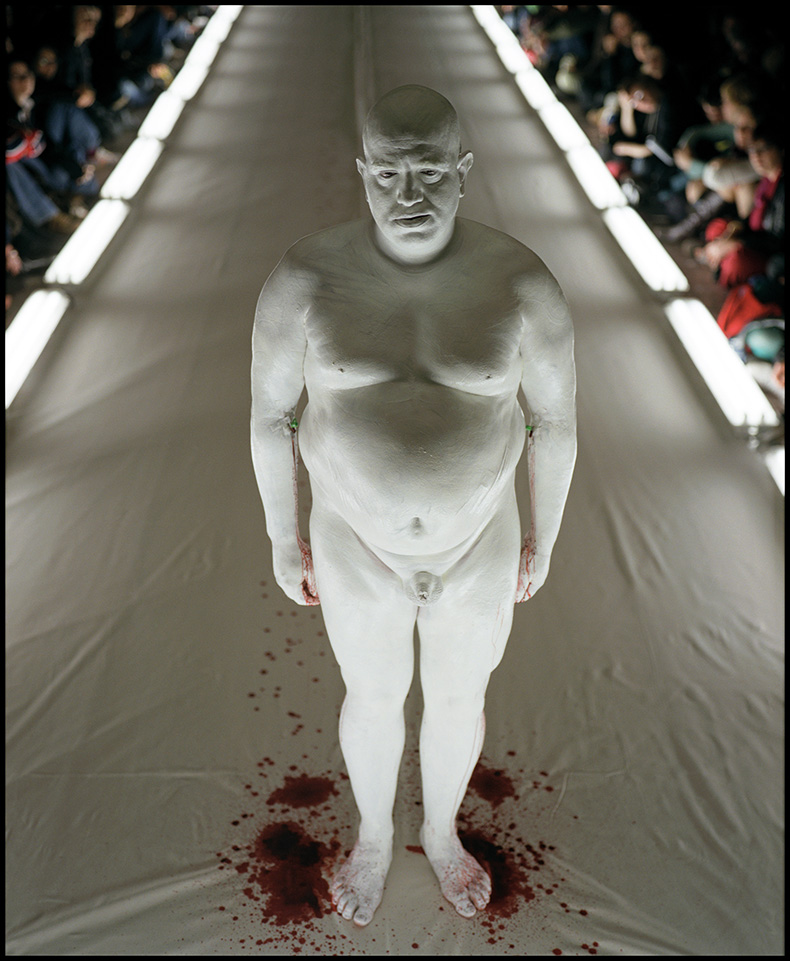
Franko B performing I Miss You (1999–2005) at the Palais des Beaux Arts, Brussels, in 2005 Artimage 2022. Photo: Hugo Glendinning; © Franko B. All rights reserved, DACS
It was painful to watch, and, one imagined, painful to make. The Italian’s wounded, vulnerable body tapped into the visual tradition of a Man of Sorrows, now taking on not so much the sins of the world as of AIDS. ‘The moment I came to make that kind of work was important, because there was such a fucking paranoia about blood and infection,’ the artist recalled. People assumed he was HIV positive, which he wasn’t; his art was disliked, above all, by gay audiences. ‘I performed in gay clubs where some people would happily fuck without condoms,’ Franko said. ‘And yet they were disgusted by my performances.’
The disgust was necessary to his art, as was the early Christian secrecy of the venues in which it took place. Both spoke of fear. After the introduction of multiple drug therapies in the late 1990s seemed to offer the possibility that HIV could be treated as chronic rather than acute, the edge was taken off Franko’s bleeding. By the turn of the century, his performances had shifted from basements and railway arches to art galleries. In late 1999, I Miss You was staged at Beaconsfield. Soon, Franko B was performing at the ICA and Tate Modern, and being reviewed in the Times. It was time to stop bleeding. Perhaps.
From the December 2022 issue of Apollo. Preview and subscribe here.
Unlimited access from just $16 every 3 months
Subscribe to get unlimited and exclusive access to the top art stories, interviews and exhibition reviews.

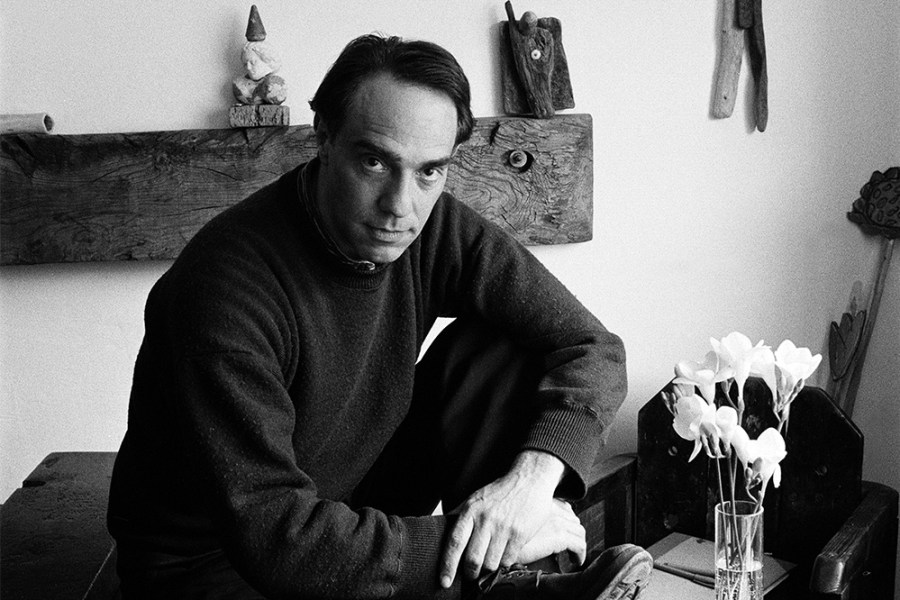
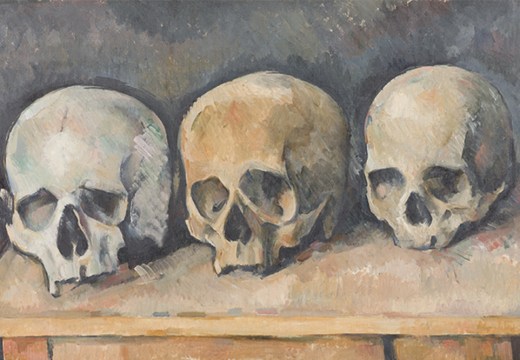
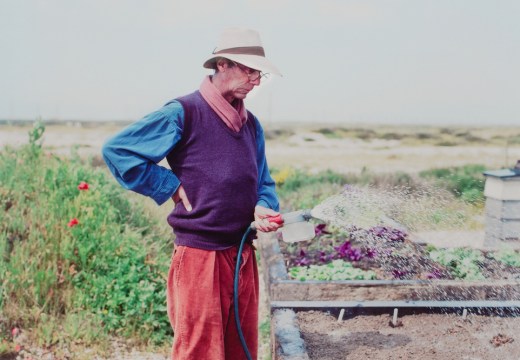
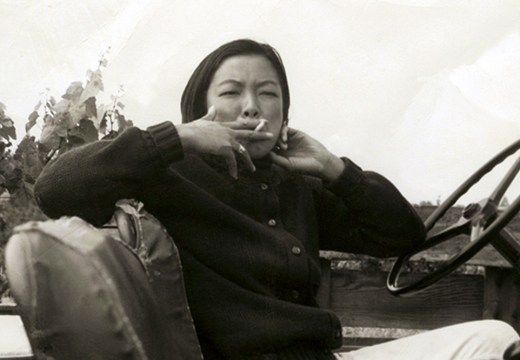









![Masterpiece [Re]discovery 2022. Photo: Ben Fisher Photography, courtesy of Masterpiece London](http://www.apollo-magazine.com/wp-content/uploads/2022/07/MPL2022_4263.jpg)
It’s time for the government of London to return to its rightful home